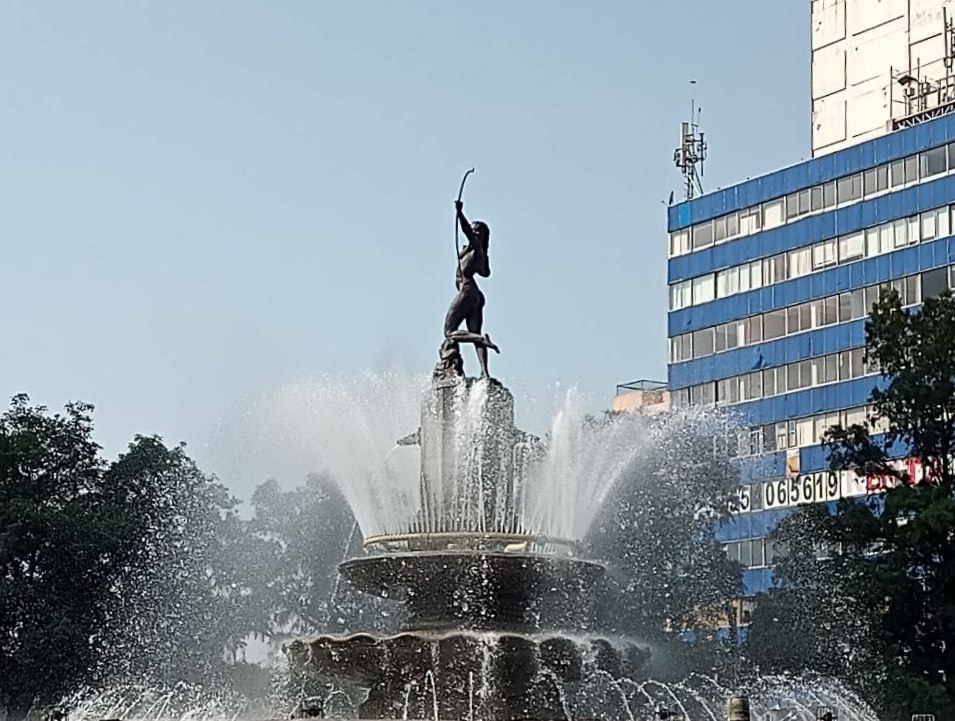

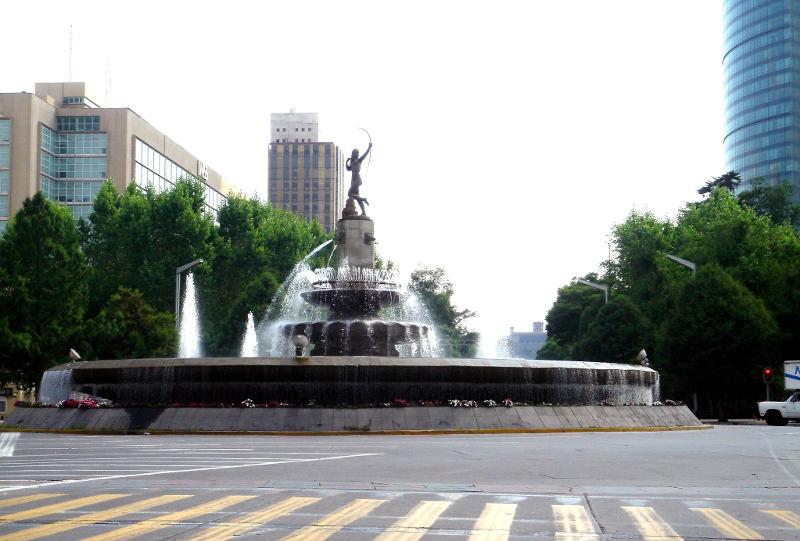
Photo: Diego Delso, delso.photo, License CC-BY-SA
The Fountain of Diana the Huntress is one of the most representative sculptures on the Paseo de la Reforma. Designed by Juan Fernando Olaguíbel Guanajuato, the fountain was the work of the Mexican architect Vicente Mendiola. The two-ton sculpture was sculpted and then cast in bronze between April and September 1942 at a foundry on the calle Obrero Mundial.
Originally called La flechadora de las estrellas del Norte (Archess of the Stars of the North), the work eventually came to be known as “Diana Cazadora,” that is, “Diana the Huntress.”
Almost immediately upon her unveiling, the ultra-conservative in Mexican society came out of hiding. A so-called “League of Decency” (Liga de la Decencia) initiated a series of protests that somehow got clothing back on the sculpture. The artist fixed the garments with but three welds in the hope of eventually removing them. Ultimately, the statue was damaged. In 1957, the monument was further damaged by a major earthquake, the same one to actually topple the Angel of Independence.
Alas, the 1968 Mexican Olympics, already well remembered for the major contribution made to sculpture in the city, had a hand in restoring the Diana, too. When the head of the Mexico City government, one Alfonso Corona del Rosal, responded to a request by the artist, Juan Olaguíbel, it was finally decided to remove the bronze loincloth. After 25 years, in 1967 Diana was as the artist intended.
In removing the welded clothing though, the sculpture was again damaged. The decision was made to, at last, simply re-cast another sculpture from the original mold. The original was sold by the artist to the Mexico City mayor and ultimately sent to Ixmiquilpan in Hidalgo, the mayor’s hometown. It’s been prominently displayed in the city center there since 1970.
![]() Westbound Turibus Historic Center Circuit buses stop to the west of the glorieta on Paseo de la Reforma. The stop is very nearly at the Rio de la Plata / Toledo pedestrian crossing.
Westbound Turibus Historic Center Circuit buses stop to the west of the glorieta on Paseo de la Reforma. The stop is very nearly at the Rio de la Plata / Toledo pedestrian crossing.
![]() The Capital Bus Center-Polanco Route stops on the southwest quadrant of the glorieta. Buses from here continue southward to the Cibeles Fountain for a stop in Roma Norte before continuing back to the Ángel de la Independencia. The Reforma-Santa Fe route also stops here to allow passengers to transfer back to the Center-Polanco buses.
The Capital Bus Center-Polanco Route stops on the southwest quadrant of the glorieta. Buses from here continue southward to the Cibeles Fountain for a stop in Roma Norte before continuing back to the Ángel de la Independencia. The Reforma-Santa Fe route also stops here to allow passengers to transfer back to the Center-Polanco buses.

Nearest at 0.08 kms.

Nearest at 0.10 kms.
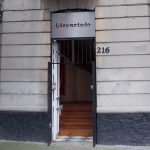
Nearest at 0.11 kms.

Polanco's luxury retail inclination...
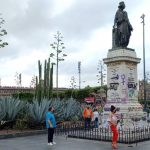
An important stop for Turibus and Capital Bus, it's more than just that...

Tlaloc's great move from EdoMex has never been forgotten.
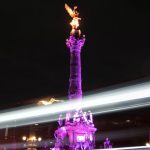
Likely the most prominent symbol of Mexico City, El Ángel is always at the center of things...
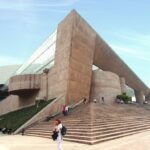
Mexico's national auditorium for performance, opera, and every kind of music...